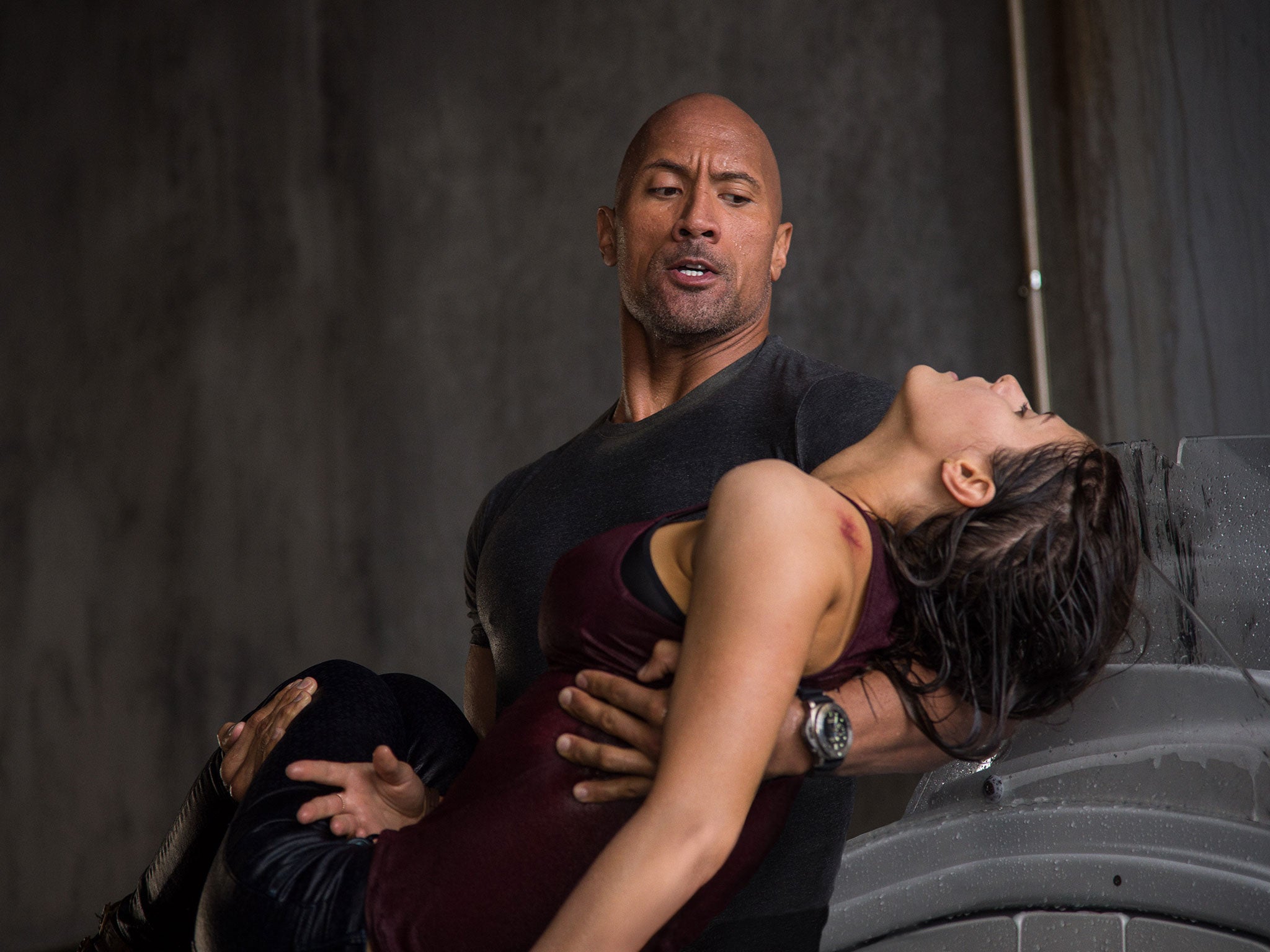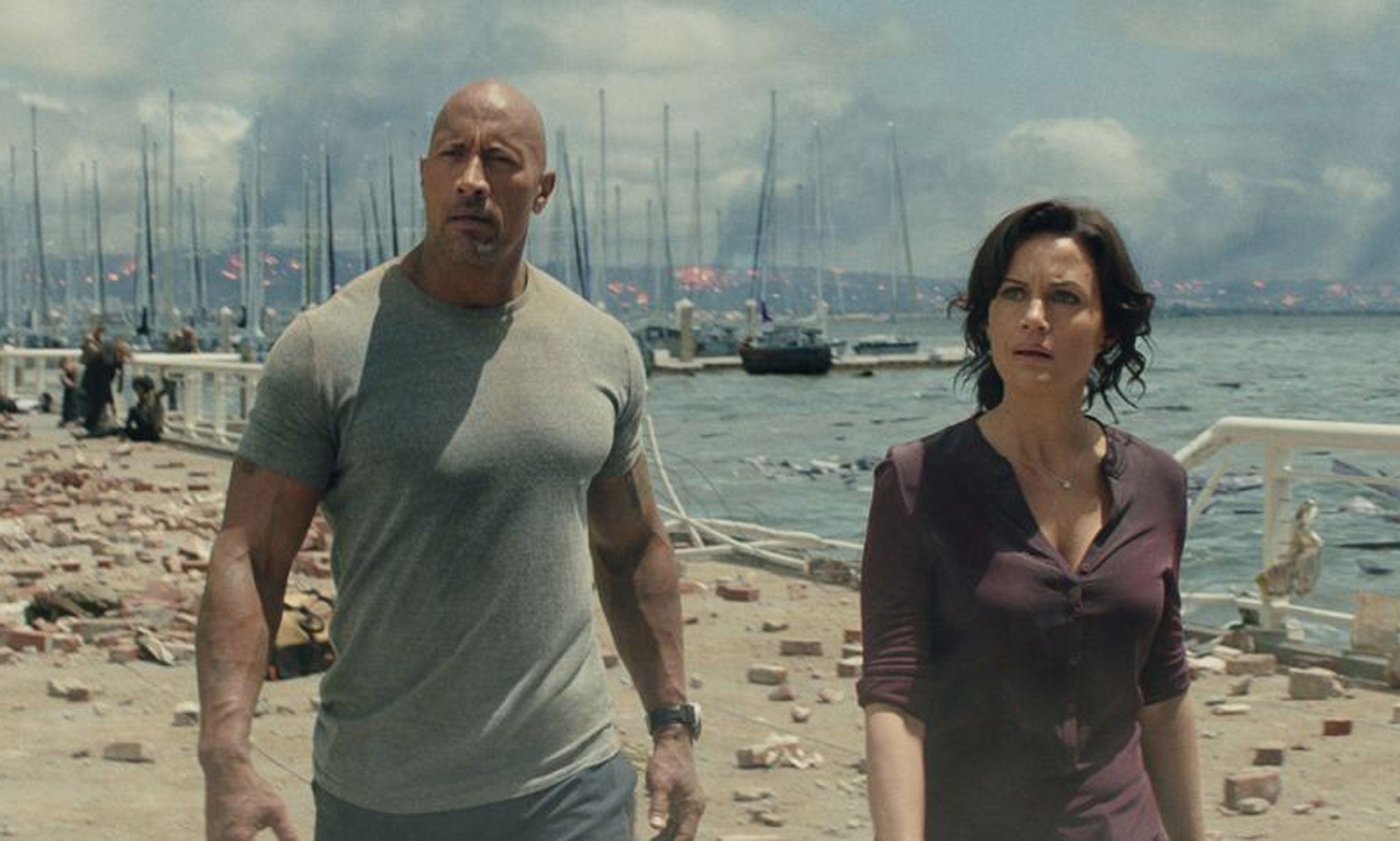San Andreas 3D, film review: Dwayne 'The Rock' Johnson's disaster movie has clear fault lines
(12A) Brad Peyton, 114 mins Starring: Dwayne Johnson, Carla Gugino, Archie Panjabi, Paul Giamatti, Ioan Gruffudd

Hollywood disaster movies have always been exercises in contradiction. They unleash forces of death and destruction that emphasise the utter fragility and powerlessness of their protagonists in the face of the abyss. At the same time, such films also celebrate human resourcefulness. Somehow, in amid the devastation, they find time to sketch in love affairs and stories of family strife.
San Andreas is in similar vein to the disaster films made in the 1970s, for example Earthquake and The Towering Inferno. It combines tremendous, stomach-churning special effects with a plot that is often trite in the extreme.
Part of the appeal lies in the story's old-fashioned feel. The enemy here isn't an Osama bin Laden-like international terrorist but nature itself. No-one has an ideological axe to grind. It's not a matter of "if" but "when" the San Andreas fault will begin to rumble. For once, humans aren't authors of their own woes. Their "guilt" only stretches as far as not paying as much attention as they should have done to the warnings of Lawrence (Paul Giamatti), a Cassandra-like Caltech professor and seismologist.
When the earthquake hits and communications go down, digital technology isn't much help. Mobile phones stop working. The ground quite literally disappears beneath people's feet. Buildings crumble as if they are made of powder, bridges collapse, roads turn into gigantic craters. Fire and flooding follow. If the visuals – all those high-angle shots of apocalypse in modern American cities – aren't enough to make us giddy, the rumbling surround sound adds to the disorienting effect. In terms of special effects, San Andreas is masterly. The CGI is seamless.
Audiences will take a frightened pleasure in trying to work out what they might have done to survive the quake. Would they have hidden under desks, headed for the high ground, or looked for open spaces? There is probably no right answer, but that won't stop us from coming up with our own survival strategies or from wondering how selflessly we would act in such an extreme situation.
In the face of all-round devastation, even Dwayne "The Rock" Johnson appears a little puny. He plays Ray Gaines, a Los Angeles Fire Department (LAFD) helicopter rescue pilot who has 600 missions to his name. His heroism isn't in doubt, but he hasn't yet had to face a quake of over 9.5 on the Richter scale.
Director Brad Peyton begins the film brilliantly with a very minor landslide on a mountainous Californian road. Stones hit the windscreen of a car being driven by a young woman. She loses control. Her mini-calamity is just the precursor of what is to follow. The first disturbances are somewhere in Nevada but once the San Andreas fault is activated, San Francisco is right in its line.
Peyton takes a ghoulish pleasure in showing characters relaxing or at work as normal. The film plays on that same Californian fatalism and fear also found in Robert Altman's Short Cuts (1993). This is the Golden State and yet its inhabitants have a creeping sense of unease – an intimation that their world might come tumbling down in biblical fashion.
As the furies lurk, Ray has domestic business to attend to. He is estranged from his wife Emma (Carla Gugino), who is about to move in with her wealthy and very unctuous new architect boyfriend (Ioan Gruffudd.) He wants to drive his daughter Blake (Alexandra Daddario) back to her college in northern California. There has been some trauma in the family's recent past, but only very slowly does the screenplay reveal just why relations have deteriorated so badly between Ray and Emma.

Watch Apple TV+ free for 7 day
New subscribers only. £8.99/mo. after free trial. Plan auto-renews until cancelled.
ADVERTISEMENT. If you sign up to this service we will earn commission. This revenue helps to fund journalism across The Independent.

Watch Apple TV+ free for 7 day
New subscribers only. £8.99/mo. after free trial. Plan auto-renews until cancelled.
ADVERTISEMENT. If you sign up to this service we will earn commission. This revenue helps to fund journalism across The Independent.
The film-makers struggle to reconcile the two opposing strands in their storyline. On the one hand, this is a film about destruction. On the other, it's an intimate drama about a man's struggle to bring his family back together – and the biggest earthquake in Californian history might be just the catalyst to make the reunion possible.

San Andreas is a film in which death is ever present – but which is never really acknowledged. Characters are seen hurling themselves off skyscrapers or being crushed underneath falling buildings. There is no time, though, for anything approaching grief. Everyone is too busy fleeing the destruction to have any time for introspection.
Ray's love life ought to seem utterly inconsequential given the immense suffering that the film is portraying. Instead, it becomes the major preoccupation. We are far more concerned with the well-being of one or two characters than with the grisly endings awaiting hundreds of thousands of others. The deeply contrived storyline has Ray and Emma in a race against time to reach San Francisco to rescue their daughter.
For obvious reasons, the Irwin Allen-style disaster movie genre has fallen out of fashion in recent years. Post-9/11 and given the many quakes and tsunamis everywhere from the Indian Ocean to the Pacific coast of Japan and Nepal, it seems tasteless to make adventure yarns based around real-life catastrophes. The films that have been made have tended to be sombre dramas about characters recovering from the trauma and loss. San Andreas is an anomaly, a blockbuster rooted in something that might very well happen, namely a series ("a swarm") of very big earthquakes in California. At times, it feels as if two very different films have been crushed together: one a simple minded and facetious B-movie and the other something altogether darker and more disturbing. The ending, in which a US flag features prominently as we hear rhetoric about "rebuilding", strikes a horribly grating note.
As a helter skelter, fairground ride, San Andreas is often exhilarating but the fault lines in its screenplay become more and more apparent. Peyton is trying to make a rousing action film about subject matter ultimately just too grim to work as escapist summer fare.
Join our commenting forum
Join thought-provoking conversations, follow other Independent readers and see their replies
Comments